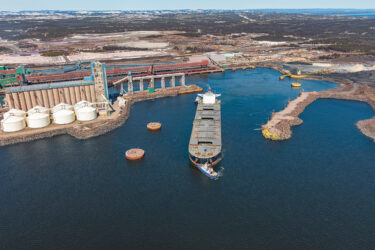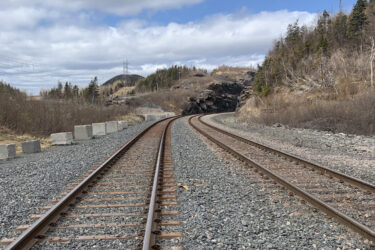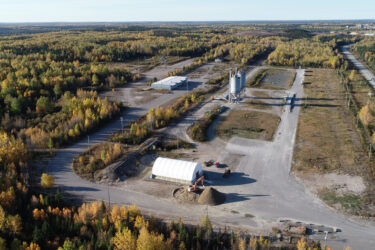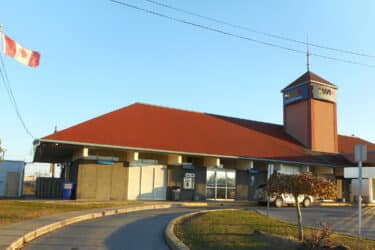The 2,400km North-South Railway project was a major railway expansion in Saudi Arabia, effectively tripling the size of their existing network at the time.
The primary purpose of the railway was to transport phosphate and bauxite from new mines in the interior of the country (Al Jalamid and Az Zabirah) to Ras al Keir, near Jubail, a new industrial city on the Arabic Gulf, for processing and shipment. The railway also transported passengers and general freight. The railway featured branches to the Jordanian border and to Riyadh and ultimately had to connect to the wider Gulf Corporation Council (GCC) rail network and to SRO and the Landbridge.
Within an international consortium, SYSTRA Canada carried out the following:
- Feasibility Study followed by the Detailed Design. The mandate included a track alignment study, operating plan, functional specifications of systems and rolling stock, preparation of tender documents for construction, and economic and financial evaluations.
- Implementation Supervision Consultancy divided into the following components:
- Comp. A: Project Management Support.
- Comp. B: Contracting Strategy, Prequalification of Contractors, Technical Support in Invitation and Evaluation of Technical Bids.
- Comp. C: Supervision of Construction and Contract Administration.
- Comp. D: Support for Rolling Stock Procurement, Including Supervision During Manufacturing and Commissioning.
- Comp. E: Assistance in the procurement of a rail operator.
- Comp. F: Design review.
- Comp. G: Detailed Design of Facilities, Including Maintenance Shops, Track and Maintenance Gang Facilities, and Passenger Stations.
- Comp. H: Detailed Design of Signalling and Telecommunications Systems.
design phase
The line was designed to heavy haul railway standards in terms of axle load and gradients to take advantage of the efficiencies that these provide in the transport of mineral traffic. The overall scope of the railway comprised 480 million cubic metres of earthworks, including 300km to be constructed through the heavily duned an Nafud Desert, 25 railway bridges, 32 grade-separated road and highway crossings, 2,400km of main line railway track, 6 passenger stations, 8 inter-modal terminals, 3 mining terminals, and 2 major railway maintenance yards. The feasibility study also included 40km of rail line through urbanized areas of Riyadh in order to connect the international airport to the city centre. SYSTRA Canada was the lead partner in a joint venture (JV) with SYSTRA and KHATIB & ALAMI (K&A).
Within the Consortium, SYSTRA Canada was responsible for project management, technical definition of the railway transportation system, preliminary design of the alignment, construction standards and specifications for track work and shops and functional specifications for signaling, telecommunications and rolling stock.
Construction Phase
After having led the feasibility and preliminary studies, and the detailed design of Civil Works and Track infrastructure, SYSTRA Canada and SYSTRA teamed with Saudi Consolidated Engineering Company – K&A and the Louis Berger Group (LBG) for the Implementation Supervision Consultancy contract. The JV employed approximately 250 permanent employees in Saudi Arabia.
In addition to its primary role in the project management and contract administration of the entire project, SYSTRA Canada played a lead role in all railway technical activities related to the design and supervision. SYSTRA Canada also handled the following sub-scope.
Component D: Rolling Stock Procurement
SAR acquired new locomotives, various types of freight wagons and coaches, as well as track maintenance equipment. Not only did SYSTRA Canada provide support throughout the procurement process, but it also held the following responsibilities:
- Management of Component D;
- Validation of the rolling stock types and models;
- Preparation of implementation plans;
- Preparation of technical specifications and tender documents;
- Technical input during evaluation and contract award;
- Manufacturing supervision and quality control services as well as commissioning services (consisting of factory acceptance tests and site acceptance tests).
Component E: Assistance in the Procurement of a Rail Operator
Due to the shortage of local railway operations experts, SAR elected to hire a railway operator to operate trains on its behalf for a 5-year period. Before the railway could proceed with issuing a procurement request seeking an operator or operators, it had to make a number of decisions regarding how it wanted the railway to be operated, and the type of contractual relationship it wanted with the operator. The railway could have been awarded as a concession to a private investment or be operated on a purely management contract basis. SYSTRA Canada’s mandate was to present and analyze the options and make specific recommendations.
This component included the following tasks:
- Examining and presenting options for selecting a railway operator for the North-South railway;
- Reviewing the current legal and legislative framework governing railway operation in the Kingdom of Saudi Arabia;
- Conducting a thorough analysis of the options available to structure an operating agreement and make recommendations for the optimal solution;
- Preparing a draft operating contract;
- Defining bid evaluation criteria and assisting SAR with bid evaluation and the award of an operating contract.
Component G: Detailed Design of Facilities, Including Maintenance Shops, Track and Maintenance Gang Facilities, and Passenger Stations
SYSTRA Canada was involved in the Detailed Design of Facilities. Its specialists undertook the following tasks:
- Providing the technical and functional requirements for SAR’s new locomotive, wagon, stores and all track, signals and maintenance gangs buildings;
- Developing the overall dimensions of these shops and determining the various repair tasks and procedures within the workshop;
- Preparing the specifications based on the latest industry standards of all the heavy machinery, both fixed and mobile;
- Developing the technical criteria matrix for the selection of equipment suppliers, evaluating the suppliers, awarding the contracts, inspection and commission of equipment and machinery.
Component H: Detailed Design of Signaling and Telecommunications Systems
SYSTRA Canada participated in the establishment of the Detailed Design of signaling (ERTMS Level 2) and telecommunication systems. After conducting a needs and requirements analysis, the team identified the most appropriate solution to fulfill the needs of the NSR Project. Technical specifications along with conceptual design and typical installation drawings were then developed and submitted to SAR, before being included in the tender documentation.
 Extension of Able Siding
Extension of Able Siding
 Studies for “Kami” Expansion (Pointe-Noire)
Studies for “Kami” Expansion (Pointe-Noire)
 TRANSSHIPMENT YARD IMPROVEMENTS – MATAGAMI
TRANSSHIPMENT YARD IMPROVEMENTS – MATAGAMI
 Technical Assistance to VIA Rail on Dorval Intermodal Station Project
Technical Assistance to VIA Rail on Dorval Intermodal Station Project
 Feasibility Study for Baffinland Mary River’s Mining Operation Railway
Feasibility Study for Baffinland Mary River’s Mining Operation Railway
 La Grande Alliance Feasibility Study Phase 1: Transportation Infrastructure
La Grande Alliance Feasibility Study Phase 1: Transportation Infrastructure
 Australia
Australia  Brazil
Brazil  China
China  Denmark
Denmark  France
France  India
India  Indonesia
Indonesia  Ireland
Ireland  Italy
Italy  Malaysia
Malaysia  New Zealand
New Zealand  Norway
Norway  Poland
Poland  Saudi Arabia
Saudi Arabia  Singapore
Singapore  South Korea
South Korea  Sweden
Sweden  Thailand
Thailand  United Kingdom
United Kingdom  United States
United States  Taiwan
Taiwan  Vietnam
Vietnam